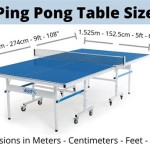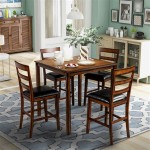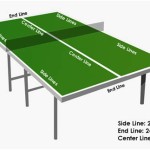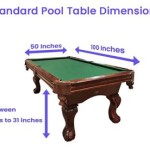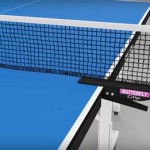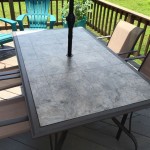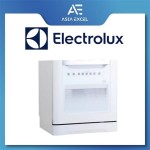Round Dining Table With Perimeter Extensions: Expanding Space and Style
The round dining table, a classic symbol of unity and conversation, has evolved to meet the demands of modern living. The addition of perimeter extensions transforms the traditional round form into a versatile piece of furniture capable of accommodating both intimate gatherings and larger social events. This design innovation offers a compelling solution for homeowners seeking both aesthetic appeal and functional flexibility in their dining space.
The core appeal of a round dining table lies in its inherent ability to foster communication. With no head or foot, everyone seated at the table enjoys equal visual and conversational access. This promotes a sense of inclusivity and encourages interaction, making it ideal for social gatherings and family meals. The addition of perimeter extensions does not compromise this central benefit; rather, it enhances it by allowing more people to participate in the shared experience.
Perimeter extensions, also known as leaf extensions or butterfly extensions depending on their specific mechanism, increase the table's surface area by adding segments around the circumference. These extensions can be deployed as needed, providing the option to expand the seating capacity without permanently enlarging the table's footprint. This adaptability is particularly valuable in smaller homes or apartments where space is at a premium and flexibility is desired.
Key Point 1: Space Optimization and Adaptability
The primary advantage of a round dining table with perimeter extensions is its efficient use of space. In its contracted form, the round table occupies a relatively small area, making it suitable for smaller dining rooms or eat-in kitchens. This allows for greater freedom of movement within the space and prevents the dining area from feeling cramped or cluttered. The user can maintain an open feel in their dining space during normal daily life.
When additional seating is required, the perimeter extensions can be easily deployed, transforming the round table into an oval or modified round shape with increased surface area. The number and size of the extensions determine the degree of expansion. Some tables feature a single extension, while others incorporate multiple leaves to accommodate a larger number of guests. The ease of deploying and retracting these extensions is crucial for the table's practical functionality.
The adaptability of this design makes it a versatile choice for various living situations. Individuals residing in apartments or condos can benefit from the space-saving advantages of the contracted round table, while families who frequently entertain can utilize the extensions to accommodate guests. This flexibility eliminates the need to purchase multiple dining tables to suit different occasions, saving both money and valuable floor space.
The design also allows for variations in seating arrangements. With the extensions in place, the table can comfortably seat a larger group, allowing for extended family dinners or gatherings with friends. When the extensions are removed, the table returns to its more intimate round configuration, ideal for smaller meals or casual conversations. This adaptability enables homeowners to tailor their dining space to suit their specific needs and preferences.
Furthermore, the perimeter extensions often incorporate self-storing mechanisms, eliminating the need to find separate storage space for the leaves. This feature is particularly convenient for individuals with limited storage capacity. The leaves can be seamlessly integrated into the table's design, making them easily accessible and readily available when needed. This contributes to the table's overall practicality and user-friendliness.
Key Point 2: Aesthetic Versatility and Design Integration
Round dining tables with perimeter extensions are available in a wide range of styles, materials, and finishes, offering aesthetic versatility to complement various interior design schemes. From traditional wood finishes to sleek modern designs, there is a round table with extensions to suit every taste and preference.
Wooden tables often feature classic designs with intricate detailing, showcasing the natural beauty of the wood grain. These tables can be stained or painted in a variety of colors to match existing furniture or to create a contrasting focal point in the dining room. The extensions are typically crafted from the same wood as the table, ensuring a seamless and cohesive appearance when deployed.
Modern round tables with extensions may incorporate materials such as glass, metal, or laminate. These tables often feature clean lines and minimalist designs, reflecting a contemporary aesthetic. Glass tabletops create a sense of lightness and airiness, while metal frames provide durability and structural support. Laminate surfaces offer a cost-effective and easy-to-clean option for everyday use.
The design integration of the extensions is essential for maintaining the table's aesthetic appeal. Well-designed extensions should seamlessly blend with the existing tabletop, creating a visual harmony when deployed. The mechanism for deploying and retracting the extensions should be discreet and unobtrusive, avoiding any unsightly gaps or misalignments. The overall goal is to create a table that looks equally appealing in both its contracted and expanded forms.
The shape of the extensions also contributes to the table's overall aesthetic. Some extensions are shaped to maintain the round form, while others create an oval or modified round shape. The choice of extension shape depends on the desired seating capacity and the overall style of the table. Regardless of the shape, the extensions should be carefully integrated into the design to ensure a visually pleasing and functional result.
The finishing touches, such as the edge profile and leg design, also play a significant role in the table's aesthetic appeal. A rounded edge profile provides a soft and inviting feel, while a sharp edge profile creates a more modern and angular look. The leg design can range from traditional turned legs to sleek metal legs, depending on the overall style of the table. These details contribute to the table's unique character and help it blend seamlessly into the dining room's decor.
Key Point 3: Practical Considerations and Functionality
Beyond space optimization and aesthetic appeal, several practical considerations influence the functionality of a round dining table with perimeter extensions. These include the ease of use, durability, and maintenance requirements.
The ease of deploying and retracting the extensions is paramount for the table's practicality. The mechanism should be smooth, reliable, and intuitive, allowing users to quickly and effortlessly expand or contract the table as needed. Ideally, a single person should be able to operate the extension mechanism without requiring excessive force or specialized tools. Poorly designed mechanisms can be frustrating to use and may even lead to damage to the table.
Durability is another essential consideration. The table should be constructed from high-quality materials and designed to withstand regular use. The tabletop should be resistant to scratches, stains, and heat damage. The frame and legs should be sturdy and stable, providing adequate support for the expanded table. A well-constructed table will provide years of reliable service and maintain its aesthetic appeal over time.
The maintenance requirements of the table should also be taken into account. Some materials, such as wood, may require regular polishing or oiling to maintain their luster. Others, such as laminate, are relatively easy to clean and require minimal maintenance. The choice of materials should be based on the user's lifestyle and willingness to perform routine maintenance tasks.
The height of the table is also a crucial factor to consider. The table should be at a comfortable height for dining, allowing users to sit with proper posture and reach their plates easily. The height of the chairs should be appropriately matched to the table height to ensure a comfortable dining experience. An incorrectly sized table and chair combination can lead to discomfort and strain.
Finally, the base of the table needs to be considered in terms of leg position. Some round tables have a central pedestal base which can offer more leg room and easy seating around the table. Other round tables have four legs which may impede leg room or certain seating positions, particularly when perimeter extensions are added.
In conclusion, round dining tables with perimeter extensions offer a compelling combination of space optimization, aesthetic versatility, and practical functionality. They represent a valuable investment for homeowners seeking a flexible and stylish dining solution that can adapt to their changing needs. By carefully considering these factors, individuals can select a round dining table with extensions that will provide years of enjoyment and enhance their dining experience.

Extra Large 88 Round Mahogany Dining Table With Perimeter Leaves

Large Round Perimeter Leaf Mahogany Georgian Style Dining Table By Leighton Hall For At 1stdibs

Round Expandable Dining Table With Leaf Storage Cabinet Seats 10 Chairish

Round Extension Table Handmade In Solid Walnut Cherry Mahogany Or Oak Wood Kapok

Round Dining Table With Perimeter Leaves 60 To 84

Industrial Round Extension Dining Table For At 1stdibs

Extension Table Round Expanding Handmade In Solid Oak Opens To Oval Shape With Leaf

Expendable Mahogany Round Six Leaf Perimeter Dining Room Table

Large Round Perimeter Leaf Mahogany Georgian Style Dining Table By Leighton Hall For At 1stdibs

Nantucket Perimeter Leaf Dining Room Table
Related Posts

